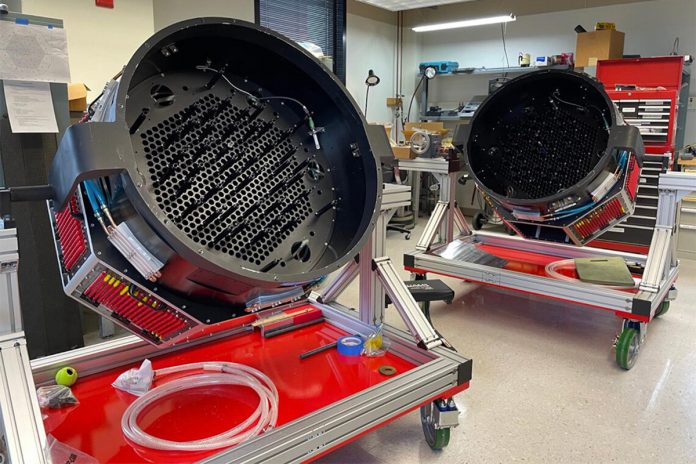University of Toronto has advanced the Sloan Digital Sky Survey. This is a 20-year-long research project. It has investigated the structure and evolution of the Milky Way galaxy.
A new Focal Plane System is there the fifth phase of the project which is dubbed SDSS-V. This system replaced a time-consuming simultaneous observation of hundreds of stars. It would have required astronomers to manually plug hundreds of optical fibers into holes drilled into a metal plate of a telescope.
This is a new innovation. It has 500 robotic positioner units which can replace human hands and precisely maneuver optical fibers into position. It can gather the light of a specific star within the target area.
The development of the new robotic FPS was a five-year effort of astronomers. It includes Ohio State University, University of Washington, École Polytechnique Fédérale de Lausanne and Carnegie Observatories in Pasadena.
Astronomers overcame numerous challenges posed by the global pandemic. They have developed components wherever they were. Then they shipped them elsewhere for further assembly. The robots were built in Switzerland.
SDSS previously observed millions of stars in our home galaxy. They have used spectrographs. These are instruments which are capable of measuring a star’s light at different wavelengths. The spectra reveal a remarkable amount of information about stars.
Two FPS units are there. One is Sloan Foundation 2.5-meter telescope at Apache Point Observatory. Second is a telescope at the Las Campanas Observatory.
FPS will enable two of the three science programs in SDSS-V. One is Milky Way Mapper, another is Black Hole Mapper. These projects will collect data from millions of objects across the sky.
MWM will study our home galaxy. It will take advantage of our unique perspective within the Milky Way. This will create a high-resolution map of the galaxy’s stars. MWM will also measure masses, ages and chemical compositions. It will include hot massive stars. It will also target tens of thousands of multi-star and planetary systems. Astronomers will understand from this how often multi-companion systems form.

